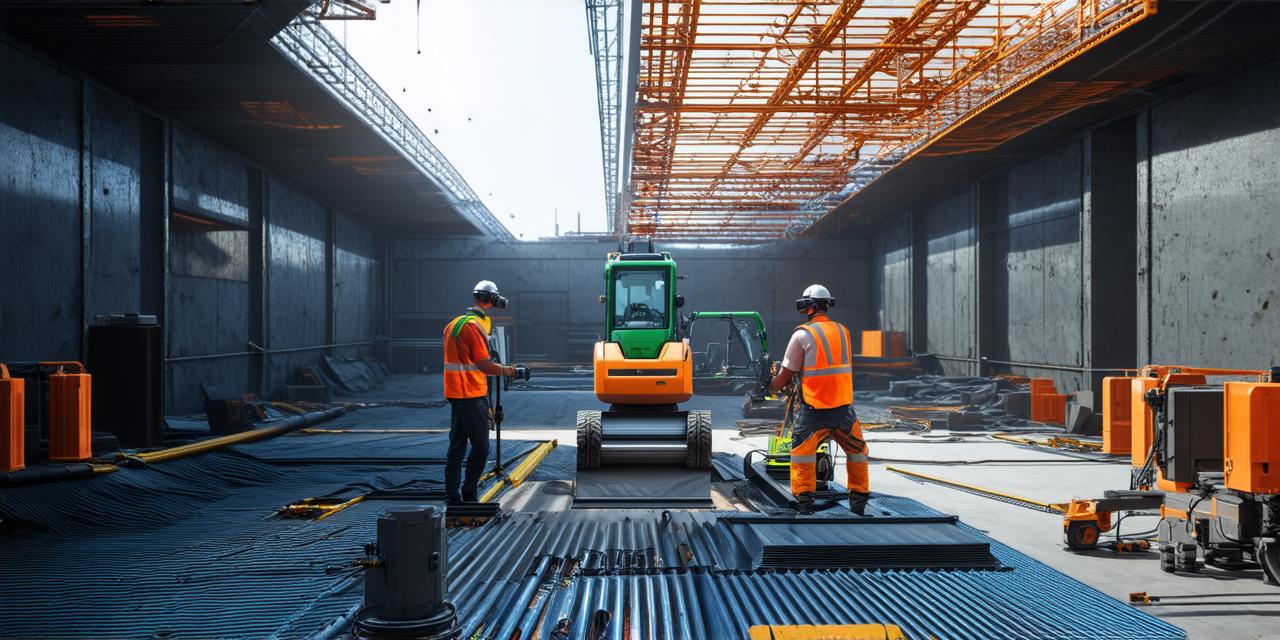The construction industry has long been one of the most dangerous and time-consuming fields, with workers risking their lives to manage complex projects. However, virtual reality (VR) technology has the potential to change all that. By harnessing the power of VR, construction companies can improve safety, streamline processes, and save money. In this comprehensive guide, we will explore the many ways in which VR is revolutionizing the construction industry and examine real-life examples of how it is being used today.
The Benefits of Virtual Reality in Construction
Improved Safety
One of the biggest advantages of using VR technology in construction is that it can significantly improve safety on site. By allowing workers to simulate complex scenarios in a virtual environment, they can identify potential hazards and develop strategies to mitigate them before they even set foot on the job site. For example, construction companies can use VR simulations to train workers on how to handle heavy equipment safely or to practice emergency procedures like fire drills.
Enhanced Collaboration
Virtual reality can also improve collaboration in construction by allowing team members to work together in a virtual environment. With VR technology, architects, engineers, and construction professionals can collaborate on designs and make real-time changes to projects, saving time and money in the process. For example, a construction company might use VR technology to create a 3D model of a building and then invite architects and engineers to work on it simultaneously.
Increased Efficiency
Virtual reality can also increase efficiency in the construction industry by allowing companies to simulate complex projects and identify potential issues before they arise. For example, a construction company might use VR technology to simulate a project and identify where there might be delays or cost overruns, allowing them to make adjustments and save time and money.
Enhanced Client Experience
Finally, virtual reality can enhance the client experience by giving them a better understanding of what their project will look like before it is built. With VR technology, clients can explore a 3D model of their project and make changes in real-time, allowing them to see exactly what they are getting for their money. This can also help reduce the likelihood of disputes or misunderstandings down the line.
Real-Life Examples of Virtual Reality in Construction
Skanska: Building a Virtual Tunnel
One example of virtual reality being used in construction is by Skanska, a Swedish construction company that recently completed a project to build a tunnel in Stockholm, Sweden. The tunnel was built using a VR system called “Tunnel Builder,” which allowed workers to simulate the construction process and identify potential issues before they even started digging. This helped save time and money on the project and ensured that it was completed safely.
Bechtel: Building a Virtual Oil Refinery
Another example of virtual reality in construction is by Bechtel, an American engineering and construction company that recently used VR technology to build an oil refinery in Texas, USA. The refinery was built using a VR system called “Virtual Plant,” which allowed workers to simulate the construction process and identify potential issues before they even started building. This helped save time and money on the project and ensured that it was completed safely.
Autodesk: Building a Virtual Hotel
Finally, Autodesk, a software company that specializes in design and engineering solutions, recently used VR technology to build a virtual hotel in Los Angeles, USA. The hotel was built using a VR system called “Dreamcatcher,” which allowed workers to simulate the construction process and identify potential issues before they even started building. This helped save time and money on the project and ensured that it was completed safely.
